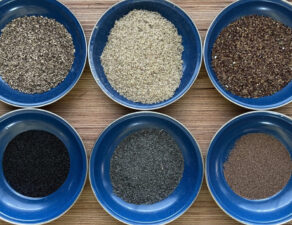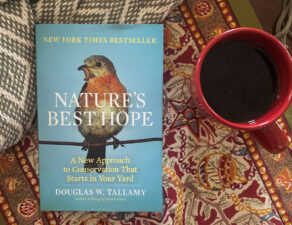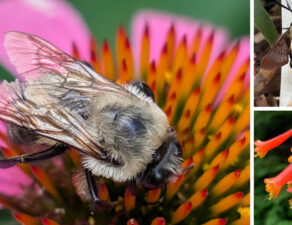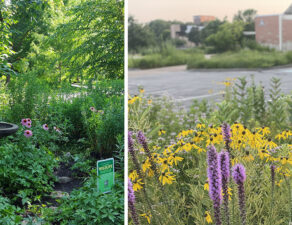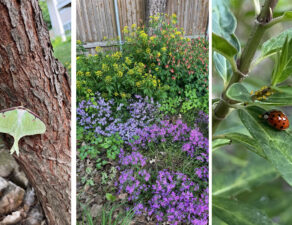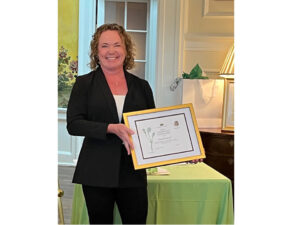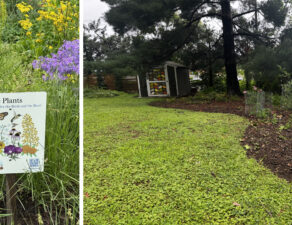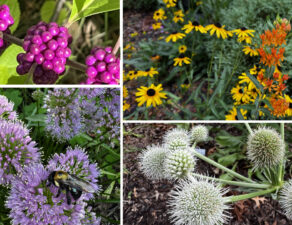
By Grace Suh
Join us for the FINAL FEAST
This inaugural year of Habitat Garden Tours comes full circle by revisiting three gardens from the first three months, one each from April, May, and June. These gardens are not only substantial and richly planted, they also abound in the keystone perennials that reach their zenith in autumn — Goldenrods, Asters, and Sunflowers.
What do we mean by “keystone” plants?
Many of us have long been in the habit of planting for pollinators. And non-natives like lantanas or zinnias certainly do attract pollinators, which are, after all, desperate for sustenance in an increasingly sterile world.
But it’s not only about blooms. Plants support wildlife not only with nectar and pollen, but with their very foliage and plant matter. Insects, butterflies, and moths — the foundation of the wildlife food web — need native plants to live, breed, and survive. They lay their eggs on native tree leaves or in the stems of tall native perennials, and feed upon native foliage as larvae or caterpillars. In ways seen and unseen, known and unknown, the myriads of insects upon which our entire ecosystem depends, depend on native plants for their very existence.
That’s why our motto at Deep Roots is: What you plant matters.

By that we mean, of course, plant native plants. Native plants are always good. But among native plants, some are more beneficial to the ecosystem than others. In fact, according to research led by entomologists Desiree Narango (a keynote speaker at our 2024 Plan It Native conference) and Douglas Tallamy, though keystones represent only 14 percent of native plant species, “they support a whopping 90 percent of the caterpillar population, making them crucial to the food web.”
The most valuable keystone native, by far, is the Oak (Quercus), which supports almost 500 species of lepidoptera (butterfly and moth caterpillars), among its many ecosystem benefits. Not far behind Oaks are native Cherry and Plum (Prunus), Birch (Betula), and Maple (Acer). We can all add more trees and shrubs to our properties, and autumn is a great time to plant them. And as we just saw in the September Habitat Garden Tour, densely leafed borders of woody shrubs and understory trees play a crucial structural role as wildlife home and cover.
But there are also keystones among herbaceous perennials. And the three most valuable genera just happen to come into bloom in Autumn: Goldenrod (Solidago), Asters (Symphyotrichum), and Sunflowers (Helianthus).
Goldenrods, Asters, and Sunflowers used to be derided as “ditch” or “roadside” plants. And it’s true that all three are drought-tolerant, grow easily, and bloom abundantly. And they will happily do so along your street frontage, driveway or sidewalk. But in a classic case of the beauty next door, research has now found that these plants are not only beautiful, cheerful and low maintenance, they also happen to be the perennials of highest value to wildlife.
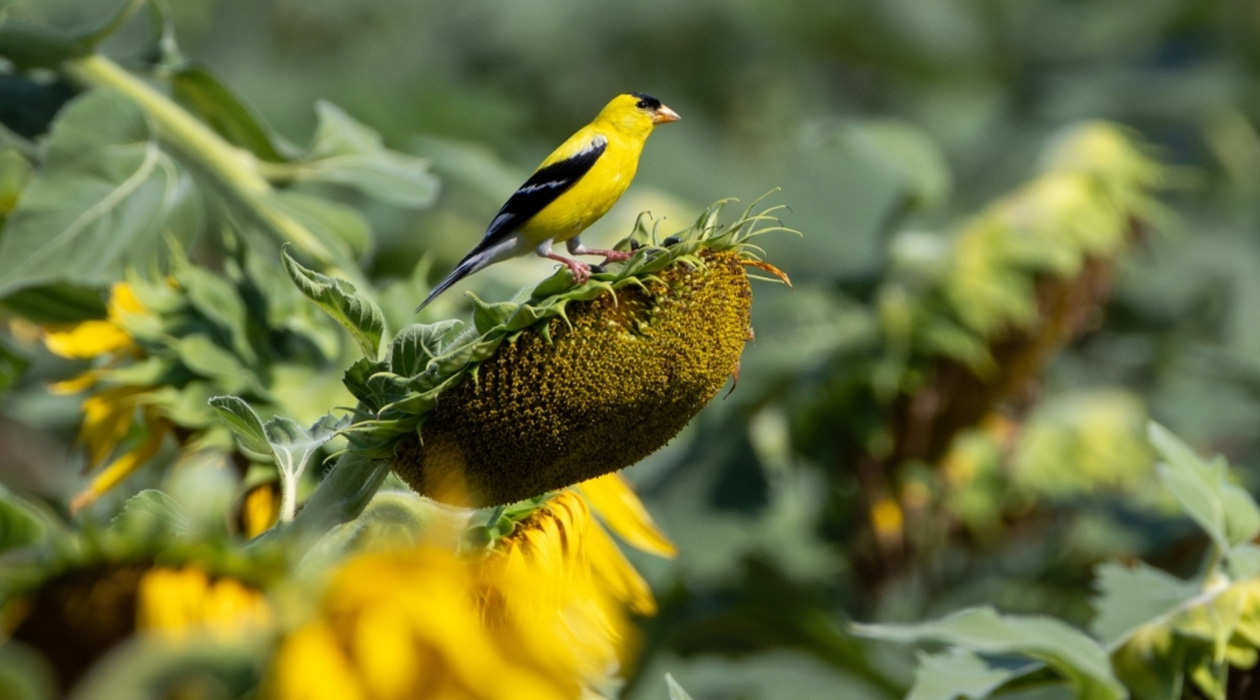
Watching the frenzy of insect activity on a Goldenrod is a humbling reminder of the interconnectedness of all beings in this physical world we all share. As development spreads apace and wild areas become fewer and fewer, the Goldenrods, Asters, and Sunflowers we grow in our yards are more necessary than ever to provide migrating and local wildlife with that crucial final feast before frost.
OCTOBER CORNUCOPIA
If you visited these three gardens back in April, May, or June, you’ll be amazed at their transformations. And if you missed them the first time, here’s a chance to see three incredible gardens at the height of keystone glory.
This month will run a little differently. As always, visit the three gardens in any order between 9:00-11:00. HOWEVER, if you would like, you are invited to congregate in the ROELAND PARK REFUGE from 11:00 a.m. to 12:00 noon. This is a chance to mingle, meet and thank volunteers and hosts, and close the season together. Feel free to bring your coffee or sandwich or simply hang out.
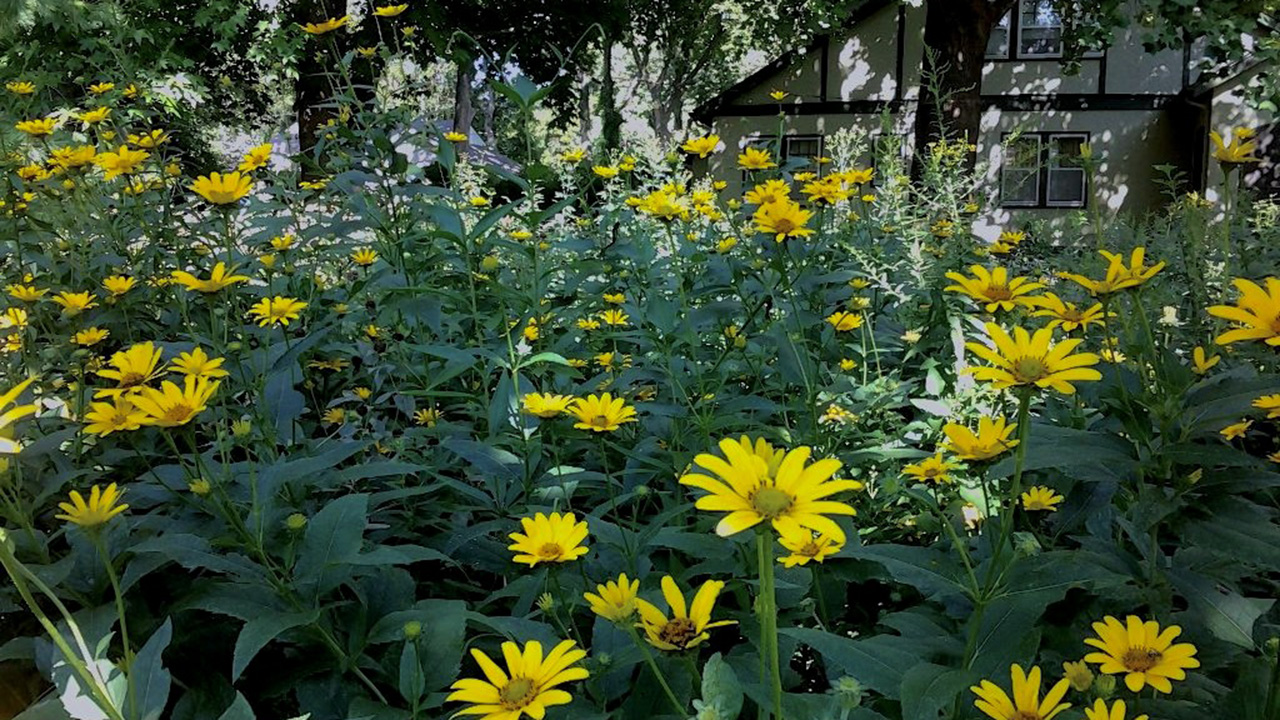
.
LOOMIS WOODS (April – Merriam)
In April, Christopher’s garden was a sea of Mayapple, Columbine, Trillium and Virginia Bluebell. These spring ephemerals have mostly gone dormant, replaced by forests of Hairy Sunflower, Jerusalem Artichoke, Canadian Goldenrod and Stiff Goldenrod.
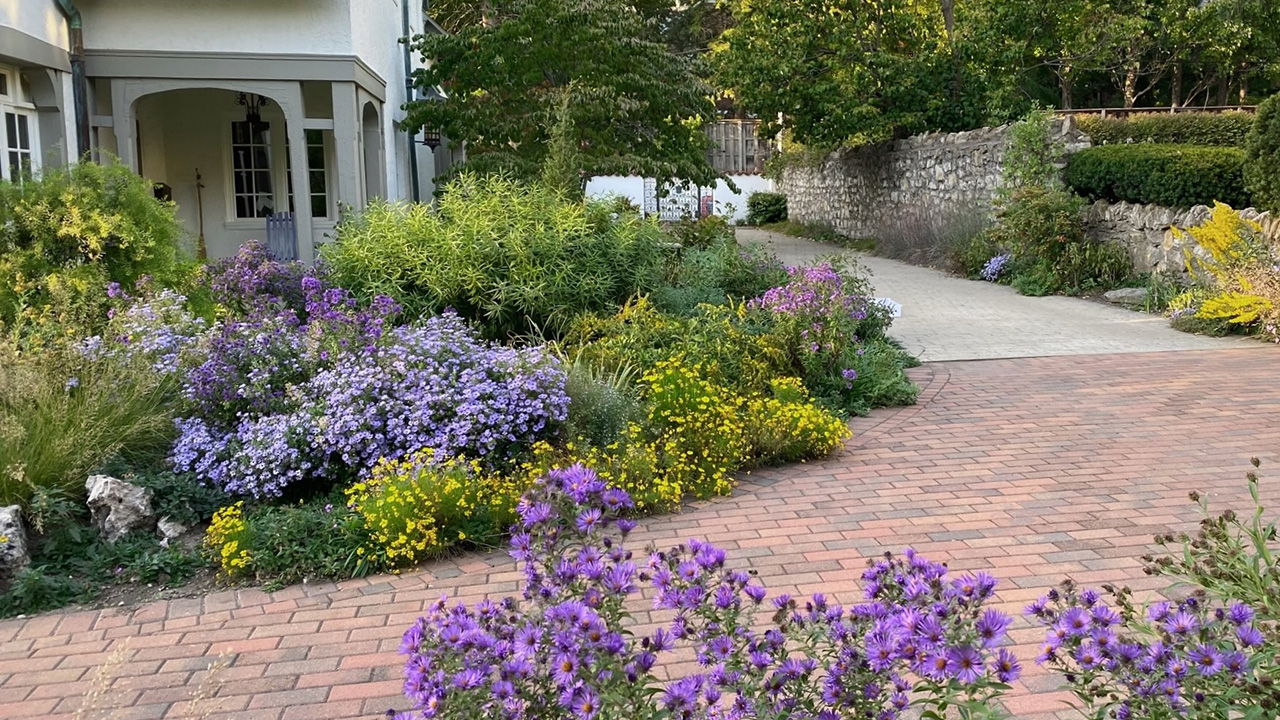
.
SUNSET SURPRISE (May – Sunset Hill)
In May, Susan’s garden gave a model lesson in showcasing bold native plants like Rosinweed and Common Milkweed in the context of a traditional neighborhood. In autumn, this garden has a final “surprise” — the neat and orderly “hedge” of green that lines her long driveway all summer reveals itself to be an all-you-can-eat buffet of goldenrod and asters.

.
ROELAND PARK REFUGE (June – Roeland Park)
Karen’s backyard was the draw back in June, a serene permaculture woodland of fruit, nut, and berry shrubs and trees around a dreamy pond. Now, the Wild Plum and Apple trees in her front yard are dwarfed by a wall of Jerusalem Artichoke and masses of New England Aster almost as large as the VW bus in the carport. Come see why hundreds of birds make their home here.
DATE: Saturday, October 12th
VISIT (all three): 9:00AM – 11:00AM
MEET (at Roeland Park Refuge): 11:00AM – 12:00 Noon
HOW TO SIGN UP
If you’re not already a subscriber, we’d love to have you join us. SIGN UP FOR OCTOBER by making a donation of any amount, according to your means.
WHERE TO GO
The Thursday before Second Saturday (October 10th), registrants and season subscribers receive an email with garden addresses. Click on the button to download the PDF of in-depth descriptions, key plants, and photos of the gardens then and now.
If you have not been seeing the emails, please note:
- From: Grace@deeprootskc.org
- Subject line: IMPORTANT 🌸 October Habitat Gardens 🦋 ADDRESSES & INFO
- Add Grace@deeprootskc.org to contacts so the email does not go to Junk or Spam.
- If you do not see the email on October 10th, please email me that day. It is not possible to respond to phone calls and emails on the day of the tour.
WHAT IS A HABITAT GARDEN?
Habitat Gardens are gardens of native plants designed to benefit birds, butterflies, and other wildlife. Our Second Saturdays Habitat Garden Tour invites you to residential habitat gardens to:
- Experience diverse habitat gardens and the succession of seasonal blooms that support wildlife.
- Meet other gardeners, native plant enthusiasts and wildlife supporters.
- Find inspiration and information to grow your own habitat garden.
View past Habitat Gardens: DeepRoots.org/HabitatGardens
